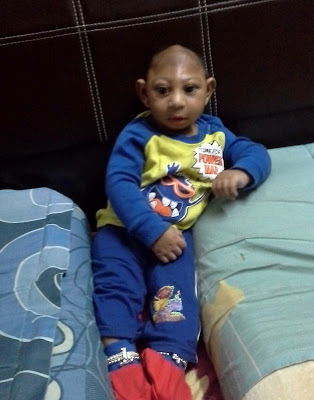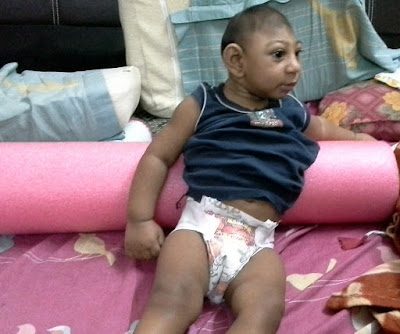How I found out about Glenn Doman and his method of teaching:
I stumbled upon brillkids.com when I was randomly surfing the internet about brain development in babies. After reading through all the information I felt a little overwhelmed. For some unknown reason I felt compelled to try it out with my baby. The methods listed in the website were Glenn Doman's method and Shichida's method.I went with the Doman method.
Why I chose Glenn Doman's method:
1. Flexibility - you do not need to start from the first if you have missed a few days of the program.
2. Fun - The method promised fun for both the parent and the child.
Flash card method:
Before jumping into the teaching stuff , I wanted to check whether he liked to look at flash cards. So, I made a trial set of 3 cards ,in big red font on a white background and flashed it quickly in front of him. He looked at the cards intently and smiled. I thought to myself "Oh well! It works. Or may be it doesn't. I will need to make more cards in order to know whether this program works."
I have been using Glenn Doman's method for the past 6 months to teach my son words and numbers.
Whenever I show him the cards he smiles broadly which encourages me to move forward with this method. The only drawback in this method is that the method is against testing babies since testing kills fun. Glenn Doman says "Never test your baby". We just have to assume that he would have learnt the words or numbers or whatever that is shown in the cards.
So far, I've showed him a lot of English words, dot cards for numbers and pictures( encyclopedic knowledge program). Making the cards is time consuming and requires a lot of effort from the side of the parents.
 |
| Flash card- sample 1 |
 |
| Dot cards- for math |
 |
| Flash card- couplets- sample |
Does it work?
It is too early for me to comment about the results. I do not know whether the method works. Moreover, I do not care whether it works; as long as he smiles whenever I show him flash cards I will keep doing it.
I hope that when he starts to speak I will come to know whether the program has worked or not.
Opinions:
'Teaching young babies'
Some people are totally for it and some are totally against it.
There are researches that support early learning and claim that they work; and of course there are researches which claim that these methods are a waste of time. You can see a lot of YouTube videos where kids less than 3 years old are reading books and identifying pictures. On the other hand there are a lot of newspaper articles which say these methods don't work.
You need to decide for yourself whether this is the kind of method you want to use to teach your baby. Trust your parental instinct - because a parent never does the wrong thing for his/her child.
Do you want to follow this method of teaching with your kid?
The founders of this method claim that this works well if you start early.For more information you can visit the iahp.org or read the how to teach your baby to read book.
I have uploaded the flash cards that I had made for Sai in the free materials section. Instead of trying to make everything on your own, just download the ready made files with a single click and save your precious time.
You can also visit domanmom.com & classicalmommy.com for many more free materials.
The only suggestion I can give is - Do not concentrate on the results. The moment you start concentrating on results , the fun part will vanish.
What do you think about using flash cards to teach babies?
*Update- 1/03/16* The flashcards do work. Though he is not verbal yet, he chooses the right word when offered options and he can even do math( dot cards). I would definitely recommend this method for teaching young kids.


























